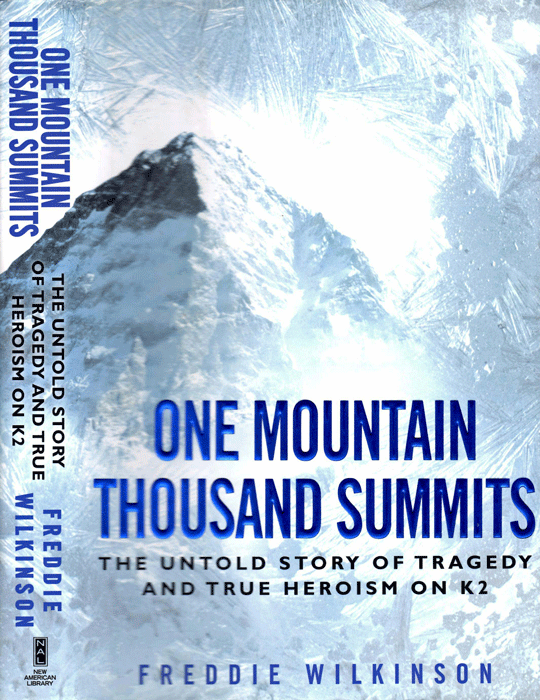2008 was a terrible year on K2. Many climbers from many parties and of various nationalities started for the summit on August 1. Eleven of them did not survive the attempt. In 2010 two books on the tragedy were published in the United States: No Way Down, by the New York Times reporter, Graham Bowley, and this one.
Like Bowley, Freddie Wilkinson is an American who was not on K2 at the time of these events; unlike Bowley, he is a climber and brings a climber’s perspective to his writing. Perhaps his most valuable emphasis is on the Pakistani “High-altitude porters” and Nepali Sherpas, whose crucial role in rescue operations is justly explored.
Again like Bowley, Wilkinson reproduces a revealing photograph taken by Chris Klinke the morning before the serac (ice-cliff) collapse that caused most of the fatalities. Klinke is an American who had the good fortune and good sense to abandon his summit attempt. His picture shows more than 15 climbers making their way up the last technical part of the route, with the huge serac impending close on their right. This historic place is known simply as “The Traverse.” The first to approach it were Fritz Wiessner and Pasang Lama, on the American expedition of 1939. On July 19 the two men climbed a rock buttress to be confronted by a decisive question: keep left on the rocks or head over to the snow under the serac. Wiessner, a superb rock climber, made for the rocks. His account of this choice may be found in the June 1956 Appalachia. He and Pasang Lama climbed the icy and difficult rocks to within easy reach of the summit. But by then it was evening, and Pasang refused to continue. Many pages of speculation have been given to their chances of success had they gone on. The summit would have been a spectacular triumph, reached without oxygen in an age when all the other 8000-ers were unclimbed. Even with retreat, the achievement was remarkable. What is less doubtful is what would have happened had they gone to the right that day: they would very likely have reached the traverse and then the summit. But by the time they tried this route two days later, they had lost their crampons and had to descend. The expedition then dissolved into confusion, the death of four climbers, and bitter recriminations that are still with us, even after all the expedition members have died.
News reports in 2008 described climbers “stranded” above the fixed ropes that had been destroyed by the serac collapse. Wilkinson points out that “until the mid-1980s, nobody bothered to take the precaution of fixing ropes on summit day on K2.” People got up--and down--without them. In 2008 about 2000 feet of line were installed. Wilkinson adds a point that needs emphasis in an age in which giant Himalayan peaks have become the site of guided climbs: In earlier times. the objective was to get a few climbers on top, on behalf of the entire expedition. On first ascents, two reached the summit of Everest, two of K2, four (on two days) of Kangchenjunga, two of Annapurna, and--famously--only one (Hermann Buhl) of Nanga Parbat. Now professional expedition leaders must try to get every one of their clients up--and back down again.
With advanced communications, ascensionists can phone the world from the top. Much of the mystery is gone. But the danger remains, as do the challenges of altitude and weather. Nobody climbed K2 in 2009 or 2010.

NOTE: 2013 saw the release of The Summit, a vivid documentary film based largely on Wilkinson’s book.